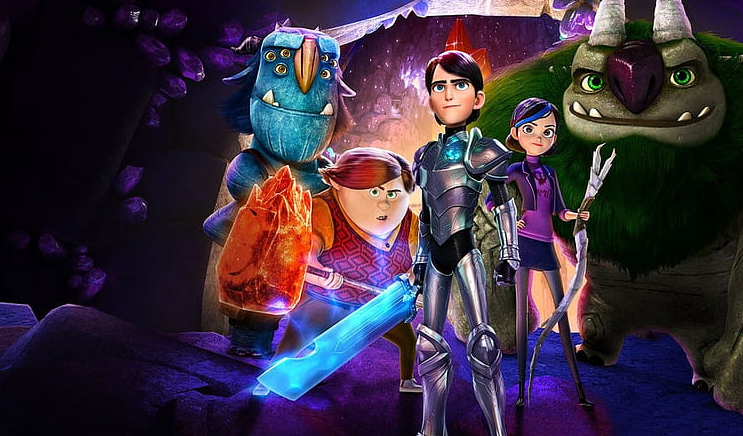Last summer, I wrote about how the majority of stories to fall into two general categories — cast-focused and protagonist-focused. In a more in-depth article, we explored the strengths and weaknesses of both kinds and how they change your story.
Mixing the two types happens occasionally, but it has to be done intentionally or it can result in disaster. We’ve already explored what happens when you take a cast focused-story, and then focus on only your protagonist in the climax. It leaves your audience feeling robbed and your ending seeming cheap, even if it isn’t.
But what happens if you turn it the other way around? What if you take a story that seems like it should be protagonist-focused, and then gradually grow the role of the characters around your protagonist until eventually, they are on the same level in depth, influence, and role as the main character? Does your audience feel robbed or disappointed as the story changes?
Here to answer the question is Guillermo Del Toro’s animated fantasy series: Trollhunters.
Trollhunters: Tales of Arcadia
Trollhunters opens to a fairly familiar premise, following the basic pattern of most highschool-students-turned-heroes like Spider-Man. Our protagonist, Jim, lives an uninteresting life at school where he longs for adventure. He hangs out with his goofy but well-meaning friend Toby, routinely clashes with the school bully Steve, and cherishes a secret crush on a girl named Claire who doesn’t know he exists. There are a few variations, like the fact that his mom is present in his life, even though his father abandoned their family over a decade ago. But other than that, the premise seems essentially the same as many other stories.
His call to adventure comes in the form of a magic amulet he discovers, which provides him with a suit of armor and sword. It is accompanied with a sacred set of duties that he can’t escape once the amulet “chooses” him. And so Jim sets out to face the adventure he’s always longed for as the “Trollhunter” — the protector of both a race of creatures known as trolls that live in hiding, and humans who may be harmed by them. He’s meant to keep the peace by ensuring neither race overruns the other, vanquishing evil trolls and stopping humans before they discover the other’s existence. Along the way, he finds a father figure in the bookish troll Blinky, who was assigned to be his trainer, along with Blinky’s friend, AAARRRGGHH!!!.
And you’d think you know how the story ends, especially considering it’s a kid’s show.
But Trollhunters repeatedly defies expectations. Even its name is unexpected — Trollhunters instead of The Trollhunter. Jim makes a point of the distinction in the first season, insisting that the friends who have supported him throughout his training and in battle are just as much Trollhunters as he is. And that theme only grows throughout the series. The show demonstrates, over and over again, that true heroes cannot fight alone. They need their friends to help and support them if they are successful. The lone wolf lifestyle ends in disaster.
Hence the plural Trollhunters.
And the show more than lives up to its name. By the third and final season, none of the characters introduced in the first are redundant or unimportant. A show that was introduced as very protagonist-focused becomes one of the most cast-focused kid’s shows I’ve seen. Toby transcends being just a side-kick, eventually sporting an enchanted war hammer, saving lives, and following his own romantic subplot with another girl in their school. Claire is only portrayed as simply the “love interest” in just the first few episodes. Soon after, she earns the most powerful weapon in the show — a shadow staff able to materialize portals almost anywhere — and there are parts of the third season when it starts to feel like she was meant to be its protagonist. Even Steve begins to realize something’s off about Jim, and his curiosity drives him to discover things no one will believe — except for Eli, the shrimpy conspiracy theorist he’s been shoving in lockers since the first episode. Quickly the two form a gang set on helping the Trollhunters at any cost in the hopes of saving their town from the dangers they’ve uncovered.
The result is that an animated TV show aimed at children gears up for an epic climax, consisting of a wide cast of characters with varying internal conflict, abilities, and weaponry. No one is insignificant or one-dimensional and no one is robbed of their moment to shine in the climax. Throughout the show, Toby saves lives, Claire nearly sacrifices herself for her friends, and even Steve doesn’t fail them. Blinky faces long-standing family tensions, AAARRRGGHH!!!’s complicated past unwinds before him, and Eli’s abilities as an inventor and engineer become his greatest strengths.
Everything you thought you knew about the show — and everyone you assumed you understood — ends up deeper and more fully-fleshed out than you could have anticipated. Although it has its flaws (it’s a kid’s show, after all) Trollhunters easily earns its place as one of the top animated kid’s shows because of it, right alongside stories like Avatar: The Last Airbender, Gravity Falls, and Disney’s 2017 DuckTales.
How To Let Your Characters Grow
It’s worth noting that part of what made this progression so impactful is that it powerfully demonstrated the show’s theme of teamwork and friendship ultimately conquering evil. As we’ve discussed before, a character, event, or plotline’s proximity to your theme is what determines its relevance. But the writers didn’t just demonstrate their theme throughout the plot and then restate it at the climax, the entire story shifted and evolved to accommodate the truth the writers were trying to share. It was because they contrasted the epic, multi-perspective climax with the sort of show you thought you were watching at the first episode that the conclusion had so much more weight and power. The writers used contrast to emphasize their theme, altering the setup of the entire show so that it better displayed it by the end.
But even if your theme isn’t about friendship and teamwork, this technique is incredibly powerful. Although not every story has the capacity to explore each character’s perspective, there are definitely some that can and would be immensely benefited by a new perspective, deeper side characters, or an expanding cast. Don’t let your characters be just a name without considering how powerful it would be if they eventually grew past that role. If you have a page or messenger, consider telling the story through his eyes — even if for only a chapter. What would your world look like from the perspective of your bartender? Maybe you discover she has her own history behind her and path before her, facing choices you didn’t see until you stopped to consider it. Have you considered the impact it would have if you redeemed one of your villain’s unnamed minions? How would a redemption arc change your story’s theme, tone, and the perspective of your other characters?
The world is full of individuals who we underestimate. More often than not, we see of the vast majority of the people around us like NPC’s. We think of ourselves as the protagonist of our own story, and forget that our barista, mailman, and plumber have stories, too. But if we keep our eyes out and our hearts open, more often than not we find that the people around us can hold wisdom, secrets, or wounds that we never would have guessed.
Trollhunters is so powerful because it’s true-to-life. All of us have the potential for greatness, no matter how deeply we’ve fallen or how far we’ve wandered from what we could be. We each hold the capacity to be the hero of a story — of laying down our lives for others, sacrificing ourselves even in ways no one sees, and creating beauty through our creativity and ingenuity. We all have potential inside of us to do something great that no one could see coming.
And it’s stories like Trollhunters that remind us of that.



Let us know in the comments:
What stories have you read or watched that allowed their characters to grow and progress past their original roles?


Hi! My name is Mara, and I’m a Christian artist, violinist, and blogger. I remember the day that I decided that I would learn something new about what makes a good story from every book I picked up — whether it was good, bad, or a mixture of both. I use this blog as a way of sharing some of the tips and tricks I’ve learned, and highlight which books, cartoons, and movies have taught me the most about writing an awesome story.


My plot of my story is structured around the four main protagonists, but this is an interesting thing to think about. I never really considered making any of the side characters a bigger part of the plot. Its an interesting idea to consider. I’m not sure how that would work with my theme but I’ll figure it out.
I maybe should have mentioned this in the article, but growing your side-characters isn’t necessary for every story. Most well-written stories don’t even use it. I just wanted to show how powerful it can be if it works with a particular story.
If you still want to use it though, consider working backwards by introducing one or more of your four main protagonists as a side or minor character, and then allow them to grow until they reach the status of a main character (even if this growth happens fairly quickly, and they’ve become a “main character” by the end of the first act). You can make it seem like they’re a minor character who makes one appearance, or a very simple character who fills a small role, or even put them in a troupe that would seem to limit them (like the “love interest” role or the “comic relief” character.) Then, allow the readers to see more and more of who this character truly is until he or she becomes as important as any of your other protagonists.
That said, this isn’t necessary for every story, so don’t feel like you have to use this technique! It’s just an idea I haven’t seen other writers talk about yet, and I’ve found it can be surprisingly powerful when it fits well with the rest of the story.